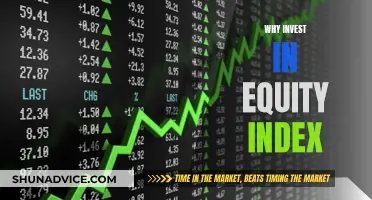
Managing your investments in retirement is a complex task that requires careful planning and regular monitoring. It involves a shift in perspective from long-term investing to being more aware of and prepared for shorter-term risks. Here are some key considerations for managing your investments effectively during retirement:
- Start planning early: It's crucial to begin planning for retirement as early as possible. This includes understanding the basics of investing, such as stocks, mutual funds, and other investment vehicles, as well as assessing your risk tolerance and financial goals.
- Diversify your portfolio: Diversification is essential to managing investment risk. This involves allocating your investments across different asset classes, such as stocks, bonds, and cash, as well as considering different types of investments within each asset class.
- Prioritize immediate cash needs: Evaluate your essential expenses, such as healthcare and housing, and ensure you have sufficient low-risk investments to cover these costs. This provides a foundation for taking on more risk with the rest of your portfolio.
- Don't abandon stocks: While retirement may seem like a time to adopt a more conservative investment strategy, stocks provide the best chance of staying ahead of inflation and preserving the purchasing power of your portfolio over the long term.
- Prepare for volatility: Retirement brings unique risks, such as sequence-of-returns risk, where a market downturn early in retirement can significantly impact your portfolio. Consider strategies like adding more guaranteed income sources or delaying Social Security benefits to mitigate these risks.
- Regularly review and adjust your plan: Investing in retirement is a dynamic process. Regularly review your portfolio to ensure it aligns with your risk tolerance, financial goals, and market conditions. This may involve rebalancing your asset allocation or making strategic adjustments to your investment strategy.
- Seek professional advice: Managing investments in retirement can be complex, and it's easy to make emotional decisions that may not be in your best interest. Consider working with a financial advisor or using robo-advisors to help navigate the complexities and provide an outside perspective.
| Characteristics | Values |
|---|---|
| When to start | As early as possible |
| How much money is needed | 60% to 80% of the income from your last job before retirement |
| Investment vehicles | 401(k), IRA, stocks, mutual funds, annuities, real estate, etc. |
| Risk appetite | Depends on age and tolerance |
| Withdrawal strategies | To maximise income and minimise taxes |
| Contribution limits | Vary by year and type of account |
| Income sources | Pension, Social Security, retirement accounts, investments, part-time work, etc. |
| Safe withdrawal rate | 2% to 4% |
| Asset allocation | More conservative as you get older |
| Volatility | Prepare for potential market downturns |
What You'll Learn

Understand tax-advantaged retirement accounts
Understanding the tax advantages of retirement accounts is a crucial aspect of managing your investments in retirement. These accounts offer various benefits, such as tax-deductible contributions, tax-deferred earnings, or tax-exempt withdrawals, helping you save money and maximise your returns. Here's what you need to know about tax-advantaged retirement accounts:
Types of Tax-Advantaged Retirement Accounts
There are two main types of tax-advantaged retirement accounts: tax-deferred accounts and tax-exempt accounts.
Tax-Deferred Accounts
Tax-deferred accounts allow you to reduce your taxable income in the year you contribute while postponing the payment of taxes on earnings until a later date. Traditional 401(k) plans and traditional Individual Retirement Accounts (IRAs) fall into this category. With a traditional 401(k), you contribute pre-tax money, and your contributions and investment gains are taxed when you withdraw them in retirement. Traditional IRAs work similarly, offering tax deductions on contributions, with earnings taxed upon withdrawal.
Tax-Exempt Accounts
Tax-exempt accounts, such as Roth 401(k)s and Roth IRAs, allow you to contribute after-tax dollars, which can then be withdrawn tax-free in retirement. With these accounts, you don't get an immediate tax deduction on contributions, but the earnings and withdrawals are typically tax-exempt.
Choosing the Right Tax-Advantaged Retirement Account
When deciding between a tax-deferred or tax-exempt account, consider your current tax rate and expected future tax bracket. If you're in your peak earning years, it may be beneficial to opt for a tax-deferred account, as you could be in a lower tax bracket when you retire. On the other hand, if you expect your tax rate to be higher in the future, a tax-exempt account could be more advantageous, as withdrawals in retirement won't be subject to taxes.
Additionally, consider any income limitations established by the IRS for certain accounts, such as the Roth IRA. There are also contribution limits for both types of accounts, which change annually, so be sure to stay informed about the current limits.
Benefits of Tax-Advantaged Retirement Accounts
Tax-advantaged retirement accounts offer several benefits:
- Tax savings: These accounts encourage saving for retirement by providing tax breaks, either through deductible contributions or tax-free withdrawals.
- Compound growth: By reducing your tax burden, tax-advantaged accounts enable your investments to grow faster, as more of your money remains invested.
- Flexibility: With a variety of account options, you can choose the one that best suits your financial situation and goals.
- Employer matching: Some employer-based retirement plans, like 401(k)s, often come with matching funds from your employer, boosting your retirement savings.
Other Considerations
While tax-advantaged retirement accounts offer significant benefits, there are a few things to keep in mind:
- Withdrawal penalties: Early withdrawals from these accounts, before the age of 59½, typically incur a 10% additional tax penalty, unless specific exceptions apply.
- Required minimum distributions (RMDs): You are usually required to start withdrawing from these accounts at a certain age (currently 73 for 401(k)s and IRAs), or you'll face penalties.
- Investment choices: The investment options available within these accounts may be limited compared to a taxable brokerage account.
In conclusion, understanding tax-advantaged retirement accounts is essential for effectively managing your investments in retirement. By utilising these accounts, you can minimise taxes, maximise returns, and ensure a more secure financial future.
Understanding Portfolio Risk: Variance in Investments
You may want to see also

Asset allocation
As a retiree, you should review your asset allocation with new risks in mind. While you could afford to be more aggressive with your portfolio in pursuit of gains during your mid-career, a more conservative approach may make sense after you leave the workforce. However, being too conservative heightens the risks of outliving your money and failing to keep pace with the cost of living.
As you age, you will need to rebalance your portfolio to keep it in line with your desired risk tolerance. For example, investment management firm T. Rowe Price suggests that people in their 20s and 30s should allocate 90% to 100% of their portfolio to stocks, while those in their 60s should have 45% to 65% in stocks and 30% to 50% in bonds.
Robo-advisors and target-date funds can be useful tools to automatically rebalance your portfolio as you age and markets change, although they charge extra fees for this service.
One common rule of thumb for retirees is to subtract their age from 110 to determine the percentage of their money to keep in stocks. For example, a 65-year-old retiree might aim for an asset allocation of 45% stocks and 55% bonds, and then switch to 35% stocks and 65% bonds by age 75.
It is important to keep in mind that asset allocation is not a set-and-forget strategy. You should review your portfolio regularly, especially after retiring, to ensure that it aligns with your financial goals and risk tolerance.
Maximizing Your Investment Portfolio: Strategies for Success
You may want to see also

Robo-advisors and target-date funds
Robo-advisors are automated services that use algorithms to manage your investments. They typically charge an annual fee ranging from 0.25% to 0.50% of the assets under their management. While this may seem like a small price to pay, these fees can add up to tens of thousands of dollars over a 30-year period. Nevertheless, robo-advisors can be a convenient option for those who want a more hands-off approach to managing their investments.
Target-date funds are another option for hands-off investors. These funds automatically adjust their asset allocation based on your planned retirement year, gradually reducing risk as you get older. While target-date funds also charge higher fees than similar index funds, they can be a good choice for those who want a set-and-forget investment strategy.
It's important to remember that both robo-advisors and target-date funds come with additional costs. When deciding whether to use these tools, consider the potential impact of these fees on your long-term investment goals.
Strategies for Efficiently Monitoring Your Investment Portfolio
You may want to see also

Dividend-paying stocks
- Visa (V): Visa is a data network company that sells its payment processing network to debt, credit card, and other payments companies. It has low capital expenditures and generates a large amount of free cash flow. In the trailing 12 months (TTM) ended March 31, 2024, the company generated $19.7 billion in free cash flow, representing 57.8% of its revenue. Visa has 15 years of consecutive dividend growth and a current dividend yield of 0.8%.
- Microsoft (MSFT): Microsoft is a global company with a large market share in personal computer software and is gaining ground in enterprise and software services through its Azure cloud computing platform. It has consistently high free cash flow margins, typically exceeding 30% of sales. Microsoft has 19 years of consecutive dividend growth and a current dividend yield of 0.7%.
- Lockheed Martin (LMT): Lockheed Martin is an aeronautics, defence, and space technology company with a strong and consistent free cash flow due to its significant backlog orders. It has a history of raising its dividend annually and currently has a dividend yield of 2.7%.
- Chevron (CVX): Chevron is a massive oil and gas company that generates large amounts of free cash flow. In 2022, it generated almost $38 billion in free cash flow, and in Q4 2023, it made $8.1 billion, representing a 17% FCF margin. Chevron has a long track record of returning cash to shareholders and has hiked its dividend annually for 37 consecutive years. It currently has a dividend yield of 4.2%.
- Domino's Pizza (DPZ): Domino's Pizza is the largest pizza company in the world, generating significant and consistent amounts of free cash flow at high margins. In 2023, it had a 10.8% FCF margin, and in Q1 2024, it achieved a 9.5% FCF margin. The company has a history of raising dividends and currently has a dividend yield of 1.2%.
When considering dividend-paying stocks for retirement, it is essential to assess your risk tolerance and ensure that you have a basic understanding of investing. Additionally, it is crucial to control investment expenses as high fees can erode returns. By choosing companies with strong fundamentals and stable dividend payments, you can create a reliable income stream for your retirement years.
Assessing Investment Portfolios: A Comprehensive Guide
You may want to see also

Rental properties
First, consider the benefits of using real estate for retirement. Compared to traditional retirement assets like stocks and bonds, rental properties offer a steady cash flow, appreciation potential, tax advantages, and inflation hedge. Real estate is also a tangible asset, providing peace of mind for investors who prefer physical assets they can control.
When planning for retirement, you can use the rental property retirement formula: Income = Money x Cash-on-Cash Return or I = M x C. Here, "I" is the income you want to retire on, "M" is the money you invest in a rental property, and "C" is the cash-on-cash return.
To determine how many rental properties you need for retirement, consider your desired lifestyle, income needs, expenses, investment goals, and additional sources of income. You can then work backward to calculate the number of rental properties needed to generate that income.
- Choose properties in areas with strong economic growth, job opportunities, and population growth to ensure consistent tenant demand and potential for long-term appreciation.
- Prioritize cash flow stability over high returns by selecting properties with reliable tenants and steady rent payments.
- Be prepared for repairs and maintenance costs, especially if you're on a fixed income during retirement. Consider setting aside funds in a reserve account to cover these expenses.
- Consider hiring a property management company to handle the day-to-day operations of your rental properties, reducing your stress and workload.
- Diversify your portfolio with a mix of rental properties and other investments, such as stocks or bonds, to minimize risk and maximize potential returns.
Remember that rental properties come with a high cost of entry, require a certain degree of knowledge and skill, and are illiquid assets. Make sure you understand all the risks and put in the necessary hours of education before investing in real estate.
Why You Need an Investment Manager: Expert Guidance
You may want to see also
Frequently asked questions
It is recommended to start planning for retirement as early as possible. The earlier you start, the more time your money has to grow. However, it's never too late to start planning for retirement.
There are two primary retirement account options: the 401(k) and the IRA. A 401(k) is a retirement plan offered by employers that allows you to contribute a portion of your paycheck pre-tax. An IRA (Individual Retirement Account) is a tax-advantaged account that you can open and manage yourself. Both options have annual contribution limits and different tax implications.
It's important to assess your risk tolerance and choose investments that match your comfort level. Stocks/equities are generally riskier than bonds. Mutual funds are a good option for most retirement portfolios as they offer diversification and relatively low fees. It's also crucial to consider inflation and choose investments that will generate interest, pay dividends, and grow in value over time.
It's recommended to review your retirement portfolio at least once a year, if not quarterly. As you approach retirement, you may want to shift to a more conservative approach to protect your assets. However, being too conservative may result in failing to keep pace with the cost of living. Finding the right balance is key.
Here are some tips:
- Keep it simple and use one custodian for your retirement accounts.
- Don't invest money you can't afford to lose.
- Diversify your portfolio to manage risk.
- Be mindful of fees and expenses associated with your investments.
- Consider seeking guidance from a financial advisor or using a robo-advisor.







